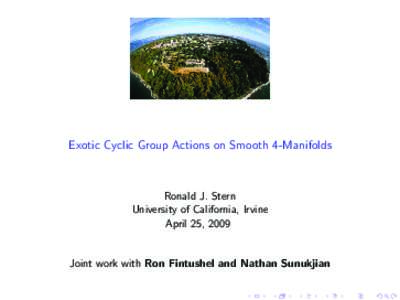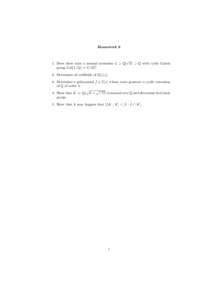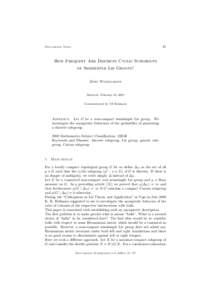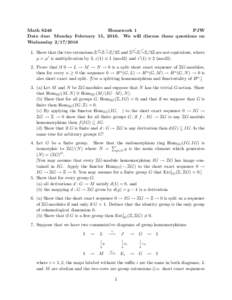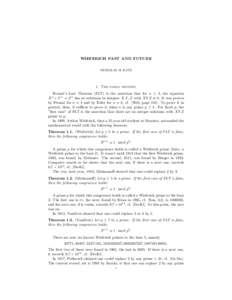<--- Back to Details
| First Page | Document Content | |
|---|---|---|
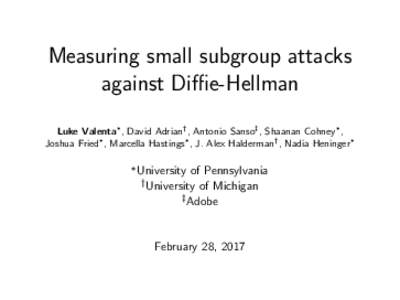 Date: 2017-09-13 08:39:05Cryptography Algebra Abstract algebra Group theory Computational hardness assumptions DiffieHellman key exchange Cyclic group Logjam Generating set of a group Subgroup Whitfield Diffie Computational DiffieHellman assumption |
Add to Reading List |
 Measuring small subgroup attacks against Diffie-Hellman Luke Valenta∗ , David Adrian† , Antonio Sanso‡ , Shaanan Cohney∗ , Joshua Fried∗ , Marcella Hastings∗ , J. Alex Halderman† , Nadia Heninger∗ ∗ Uni
Measuring small subgroup attacks against Diffie-Hellman Luke Valenta∗ , David Adrian† , Antonio Sanso‡ , Shaanan Cohney∗ , Joshua Fried∗ , Marcella Hastings∗ , J. Alex Halderman† , Nadia Heninger∗ ∗ Uni